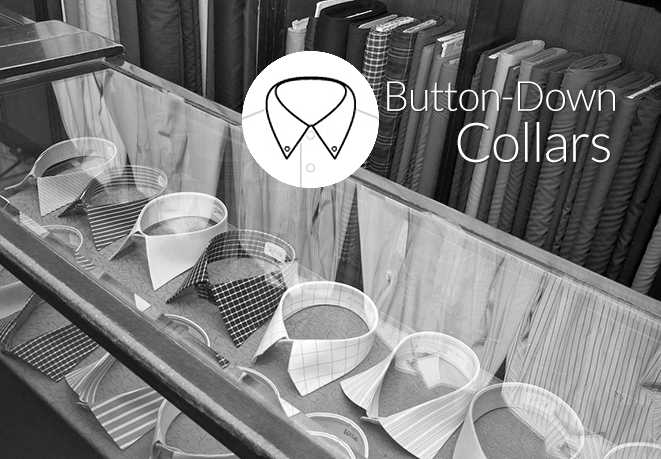A man’s shirt with a button-down collar has traditionally been regarded as sporty and informal, but in the US in the 1950s shirtmakers began produced dress shirts for business and more formal events with this style of collar.
An immediate advantage of shirts with a button-down collar is that they can trade on both lines of development: the same shirt can be worn for both formal and casual occasions.
The button-down collar has small buttonholes at the tip of each point, corresponding to a similarly small button on each side of the shirtfront. The result is that the shape of the collar, and especially the points of the collar, will always be in position and will always lie flat.
Since they are visible, make sure that the buttons are good quality; if you wear a suit with a tie and a button-down shirt, these are the only buttons that will be seen – and because they are so near to your face, they definitely will be noticed.
Normally the buttonholes and the buttons are visible when fastened, though in the last few years we have increasingly seen concealed button-down collars. These have the buttonhole only on the inner lining of the collar. They are fastened in the same manner and provide the same benefits of holding the collar in place, but no button is visible.
Most button-down collars have a collar spread ranging from medium to narrow and so generally looks best when worn with a small knot in the tie.
Although all button-down collars will need ironing, the collar itself is normally quite soft and will not have the interlining used in some other collar manufacturing to make sure that the collar points lie flat. In particular, the roll of the collar should not be at all stiff to wear.
The button-down collar generally looks best on people with oval, diamond and square shaped faces, but it is a style that suits most men.
